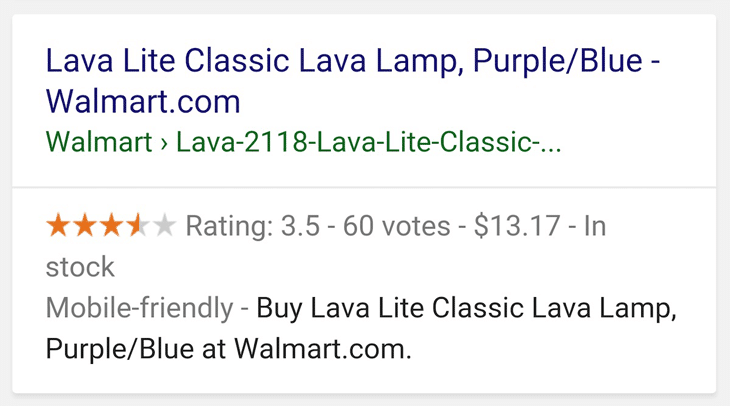
6 Ways to Improve Your CTR in 2022
This guest post was written by Syed Balkhi a founder of the worlds largest free WordPress resource site, WP Beginner. To learn more about WP Beginner, visit their website.
Do you know if your website is performing well? There are lots of indicators that work together to show how your website is actually performing. But without clear insight into how users interact with your website, you’ll miss out on ways to increase sales and grow your business.

One of the best ways to boost performance is to track and increase your website’s click-through rate (CTR). When more people click on your website link in a search page or click on your ads, you’ll sell more and convert visitors to subscribers.
Let’s dive in and uncover what CTR means for your business and how you can use it to improve your site’s performance in 2022.
What is CTR and Why Does it Matter?
A click-through rate or CTR is a metric used to measure the effectiveness of marketing campaigns. It’s the ratio of people who click on your website link or ad when they see them.
It’s often used to measure the effectiveness of ad campaigns. When more people click on your ads, it proves that your ad is relevant and interesting to your intended targeted audience.
This also applies to measuring the impact of your SEO (search engine optimization) efforts. When your blog posts or web pages appear as a search result for a targeted keyword, you’d look at the ratio of people who clicked on your site link to the number who saw but didn’t click.
Being aware of your website’s CTR helps you determine whether your marketing is paying off by telling you what content is most engaging to your audience (but you’ll still need to look at other factors to get a full view of your site’s performance).
Ways to Improve Your Website’s CTR
Improving your website’s CTR is easy to do with the right practices. So, start by following the practical steps below, but remember that you may have to change things up to suit your needs. Every site is different, so tweak your strategy until you achieve an increase in viewership.
1: Measure Your Website’s CTR
The starting point of any successful marketing campaign is to measure the current state of your website and all the activity on it. There are a few ways to check your current CTR depending on how people arrive at your website.
If you’re running ads with Google Ads, then you can simply look at your ad campaign reports. Adding Google Analytics to your website will also help you track how many people arrive at your website through those ads. I recommend using an analytics plugin for WordPress to help you with reporting.
While Google Analytics is free and gives you in-depth data, it’s also hard to set up and read if you aren’t an expert. A solid plugin will give you visual data you need by displaying the most important information on your dashboard.
Another way you can measure your CTR is by looking at conversions. Once a person lands on your website, do they sign up for your newsletter or buy your product? This data tells you that people are clicking on your ad and website link on SERPs. But it also goes a step further and shows you that your content is working since it converts visitors from leads into buyers.
2: Improve Your Search Engine Rankings
Here are two key ranking statistics that you should know:
- Seventy-five percent of searchers don’t click past the second page of a search engine results page
- The first five search results get 67% of the clicks
These facts tell you something important: the higher your content ranks for a keyword, the more clicks you get. And this means that you need to make search engine optimization a top priority in your marketing.
We can’t cover the subject of SEO comprehensively in this post, but the following points will provide a good idea of what you need to do to boost your site rankings:
- Know your audience. When you know what your audience wants and who they are, you can identify the right keywords and create content that matters to them
- Use SEO tools. A good SEO tool will audit your website, identify problems, analyze your competition, and recommend keywords to target. Your best chance of improving your website’s performance is to leverage data provided by an SEO platform
- Create useful content. This point goes without saying, but many businesses make the mistake of focusing on promotional content. Instead, think about problems your customers face and build blog posts that offer solutions. Truly helpful content has a higher chance of ranking as a top post
- Carry out technical SEO. SEO has a technical aspect that you can’t ignore. You need to create sitemaps, set up your robots.txt file to allow search engines to crawl your site, and carry out other technical tasks that are best done with an SEO plugin.
The objective of SEO is to create content and structure your website to provide the most pleasing experience you can for your audience.

Make sure that you work with a comprehensive SEO plugin or tool. I recommend that you use AIOSEO, which lets you manage your SEO efforts right from your WordPress dashboard.
3: Optimize Your Titles
Just getting a higher ranking for your web content isn’t enough. People need to feel like your website offers the best chance of meeting their needs before they click on your link.
They scan the search result titles to look at which post is most likely to give the answer they’re looking for. So, a simple but critical factor in your rankings is optimizing your post and page titles. Here’s how:
- Use a headline analyzer tool. This type of tool will give you a score and tell you if your post titles are more likely to get clicks and lead to higher search rankings. Rewrite your titles until they get a score of 70 or higher
- Make your titles descriptive. They should tell your users exactly what your post is about and what to expect. “7 Best Adventure Motorcycle Boots for Trail Riding” is better than “7 Best Motorcycle Boots”
- Avoid clickbait. When people click on such content and find that the content isn’t what they expected, it’ll create a poor user experience and your website will also get penalized by search engines due to the high bounce rate that follows
- And avoid long titles. Users want their information quickly. A short and descriptive title is easier to read and tells your readers what they need to know in an instant. Plus, most search engines will truncate meta descriptions that run too long
The more optimized your post titles are, the more clicks they’ll get even when they’re placed alongside your competitors’ posts offering equally good content.
4: Leverage Meta Descriptions
People also look at meta descriptions to know more about a site’s content before they click on any links. Meta descriptions appear below a URL in your search page result and display a few lines of text that describe the content within.

While meta descriptions don’t directly influence your website’s ranking, they do influence user behavior. A well-written and informative description will entice readers to click on your link instead of another. Search engines like Google take note of such behavior and factor it into ranking websites.
Here’s how you can improve your meta description to create more clicks:
- Use keywords. Adding the right keywords to your meta description tells users that your content is for them, making them more likely to click on your URL
- Be descriptive. Like titles, your meta description should clearly state what your website is about
- Add a call to action. You can use this space to get users to take action right away. Adding a call to action also implies to users that your page will help them achieve their goals right away
- Build trust. Depending on what your content is about, the meta description is a great place to create trust. Mention awards won, number of downloads, and other trust factors that convince users of your authenticity
When done correctly, meta descriptions provide context and help users figure out if your website is right for them. They can increase your CTR and bring qualified leads to your business.
5: Use Structured Data
If you’ve ever searched for a recipe online, you will have noticed that Google shows you results with the cooking time, recipe ratings, and other details with each site that appears on the results page.
Such information appears as a result of using a structured data or schema markup. Structured data for SEO is code that you can add to your website content so that search engines understand your content better.
Schema markup exists for books, movies, and other creative works. You can also add structured data for places like companies, local stores, and restaurants. So, when people look for a business online, they’ll also see things like ratings, pricing, and other details.

Adding schema markup makes it more likely that search engines will show your website for certain searches. They also provide enough information at a glance to show users whether or not your content is right for their needs. Such added information goes a long way towards increasing traffic to your business site.
6: Leverage Ads
We’ve looked at several ways you can organically boost your CTR. But it’s also a good idea to use paid options like advertising. Make use of Google Ads’ Keyword Planner tool and look for keywords that have enough volume but not too much competition.
You can easily run up a tab if you aren’t careful with your ad spend. That being said, using paid ads to get your website right at the top of a page can help you achieve a significant boost in traffic quickly.
Paying for ads is a worthwhile activity that helps you build your brand image. It also gives you the chance to look at how people respond to your content and see if you’re able to drive conversions.
Watch Out for Content Cannibalization
So far, I’ve shared things you should do. But you should also know what not to do as well. A major mistake that businesses make is to not plan their content. When you build blog posts without a clear strategy, it can lead to content cannibalization.
This is an issue where your blog posts are too similar and target the same keywords. When search engines produce results for a query, they could display unoptimized blog posts because they appear to be equally useful. Your content is competing against itself and this leads to lower CTR, conversions, and authority.
Do an audit of all your content and see how many posts you have targeting the same or similar keywords. If you notice competing content, choose one post to optimize so you can drive traffic to a single source. Or even rewrite and republish your posts so that they are distinctly optimized for different keywords.
When your blog posts serve a clear purpose, they’ll rank better and get more clicks.
From Click Through Rates to Increased Conversions
We’ve looked at why click through rates matter for businesses. Your CTR tells you a lot about how relevant your content is to your audience, and it’s a way to track your website’s overall performance.
I’ve shared several ways you can improve your website’s CTR. Start applying them but make sure that you test out the changes you make and fine-tune them to suit your business.
You’ll soon start improving your CTR and see a spike in traffic and even revenue too. So, get started today!
